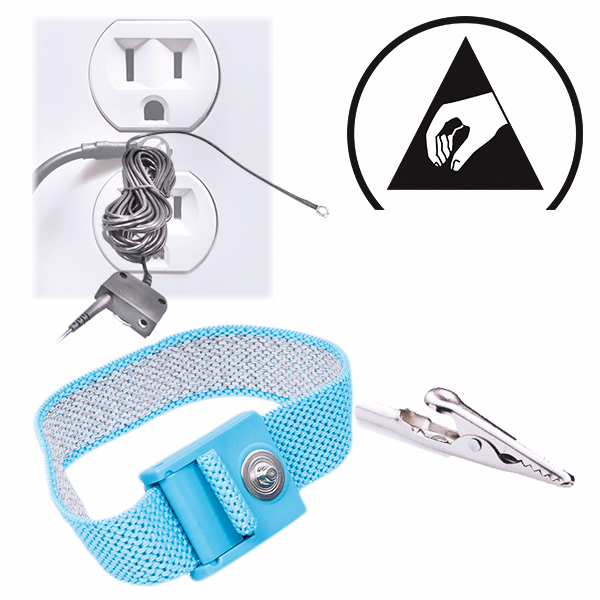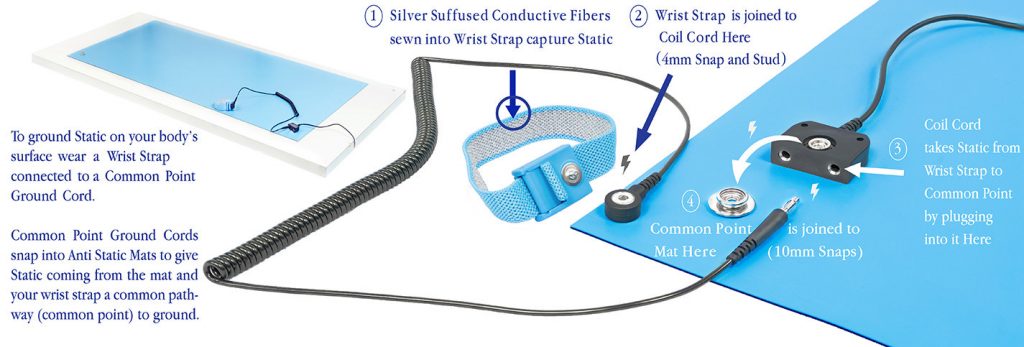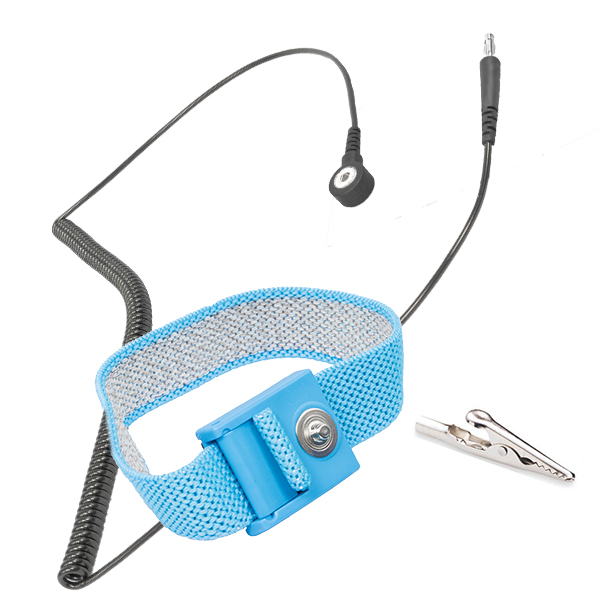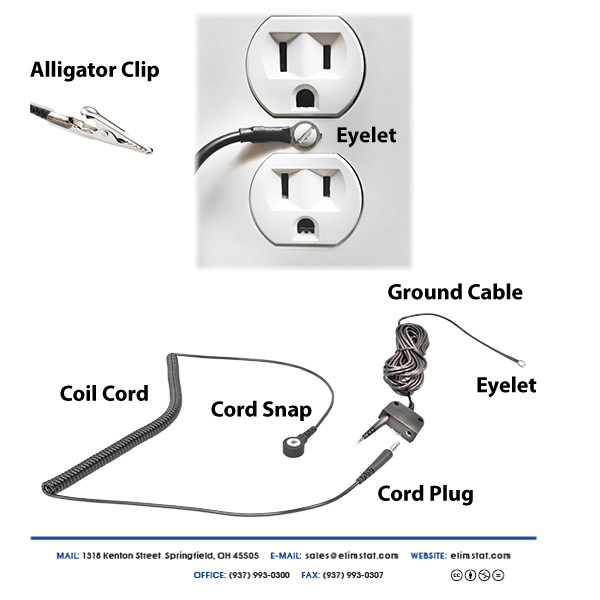
There are actually multiple places where you can connect a wrist strap to in order to be grounded. Wrist Straps can be connected to an electrical ground line via an electrical outlet or clipped onto free-standing grounds (like a metal table on a stone floor).
ESD is based on the fact that people and things are made of electrons. When these electrons are scraped off us by contact with another object a destructive transfer of electrons (electrostatic discharge) potentially can take place.

The wrist strap does two things to prevent ESD: it provides a conductive path to ground for electrons that are static on our skin and clothes, and since it is worn on one hand (instead of two) that path is “dedicated” making it easy for electricity on the surface of our skin to flow to that point.

The inside of an
A 4mm stud snap protrudes from the outside surface of the strap where you will connect to a coil cord (typically good for 50,000 flexes) that has a 1 megohm resistor built into it.
The resistor
Next, we want to connect the coil cord to an electrical ground so that we are not electrically isolated, but instead electrically bonded- grounded.
A common point ground can be used to ground both an

Grounding cables end in an “eyelet”. This eyelet is a metal ring that you can screw into an electrical outlet to transfer static from you to the ground line in your building.
Alternatively you can fix an alligator clip on the end of your cable to a conductive surface that leads to ground.
Just make sure you do not use the alligator clip to “ground” the wrist strap to an anti static mat. This will not work. In fact, this will increase the total system resistance to ground over the 35 megohm limit recommended per ANSI /ESD 20.20 [ESD Handbook Tr20.20-2008 section 5.3.2.2.2]
Unless you have to, it’s recommended not to use the alligator clip. While it seems convenient, it is best used only when you are sure of the pathway to ground you are attaching it to.
